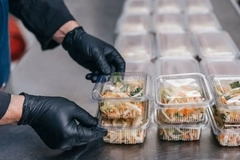New Bio Composites from Bioplastics and Pulp Fibres

The material is renewable, shows good mechanical properties, a perceived naturalness, nice tactile properties and can be dyed with clear colours.
Sep 16 2011 --- Innventia, together with an industrial consortium, has developed a promising wood-polymer material from cellulose pulp and PLA. An industrially viable production process for producing the material into granules for injection moulding without changing the material identity is currently not available. A multidisciplinary and international team from Sweden, Finland and Germany led by Fraunhofer UMSICHT is working on this in the research project.
Innventia, together with an industrial consortium, has developed a promising wood-polymer material from cellulose pulp and PLA. During autumn, this material is to be launched by Södra under the name DuraPulp. The material is renewable, shows good mechanical properties, a perceived naturalness, nice tactile properties and can be dyed with clear colours. The DuraPulp material to be launched by Södra will be in the form of composite pulp bales, to be further processed by various techniques into final products. One limiting factor though is that there today is no industrially viable production process available for producing the DuraPulp material into granules for injection moulding. The research project "MouldPulp" intends to change this. The aim of the 3-year research project is the development of a processing technology that allows making injection moulded parts out of DuraPulp but keeping the naturalness material identity. A multidisciplinary and international team from Sweden, Finland and Germany led by Fraunhofer UMSICHT is working on this.
The technical approach is to combine the DuraPulp process with a special compounding process. The objective is to achieve a high fibre amount and at the same time a gentle compounding process and homogenous fibre dispersion. Afterwards, the granules will be injection moulded to sample specimens and technical parts. The material properties and moulded parts characteristics will be tested and evaluated. A recycling concept with the separation of polymer and fibres will be explored. The development process is framed into a techno-economic and ecological assessment of the novel processing technology.











